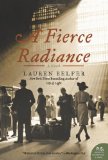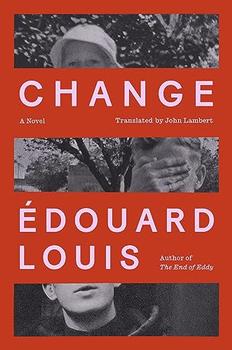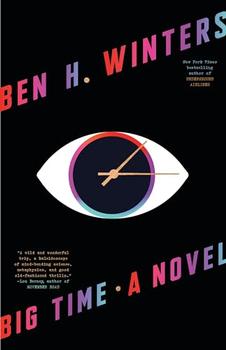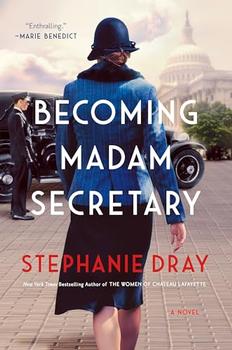Summary | Excerpt | Reading Guide | Reviews | Beyond the Book | Read-Alikes | Genres & Themes | Author Bio

Critics' Opinion:
Readers' Opinion:
First Published:
Jun 2010, 544 pages
Paperback:
Apr 2011, 544 pages
 Book Reviewed by:
Book Reviewed by:
BookBrowse Review Team
Buy This Book
This article relates to A Fierce Radiance
The Rockefeller Institute
The Rockefeller Institute features prominently in A Fierce Radiance. While Dr. James Stanton and the other researchers depicted in the novel are fictional, the Institute is a real place dedicated to biomedical research.  It was founded in 1901 by John D. Rockefeller Sr., philanthropist and owner of Standard Oil, after his grandson died from scarlet fever. The Institute was the first research center in America to focus on cures for the major diseases of the day: tuberculosis, diphtheria and typhoid fever.
It was founded in 1901 by John D. Rockefeller Sr., philanthropist and owner of Standard Oil, after his grandson died from scarlet fever. The Institute was the first research center in America to focus on cures for the major diseases of the day: tuberculosis, diphtheria and typhoid fever.
In 1910, the Institute opened a hospital, where scientists could quickly test their laboratory research on actual patients. The hospital became a model for future clinical research centers in the United States.
Following on from many early successes, which included contributing to the development of Penicillin as a commercially viable drug; in the 1940s researchers at the Institute were the first to utilize the electron microscope to see inside cells, thus realizing that the structures inside cells play important roles in their function and development. Around the same time, they also learned that DNA is the substance responsible for transmitting hereditary genetic information. These two discoveries would pave the way for many of today's medical breakthroughs.
In 1955, the Institute expanded its mission to producing future generations of scientists, offering Ph.D. degrees, shortly followed by a joint M.D.-Ph.D. program. In light of its increased educational focus, the Institute changed its name to Rockefeller University in 1965.
Throughout its history, the University has always striven to find solutions to urgent public health issues. It functions without formal departments and keeps bureaucracy to a minimum, which encourages collaboration between the disciplines and allows scientists to take on high-risk, high reward research. The University has five primary areas of interdisciplinary research: biochemistry, molecular and cell biology, immunology, neuroscience, and physics. Using this interdisciplinary method, scientists at the University have developed meningitis vaccines, confirmed the connection between cholesterol and heart disease, and discovered that some forms of cancer can be caused by a virus. Other recent discoveries include developing methadone therapy to wean addicts off heroin, and drug cocktails that significantly extend the life of HIV and AIDS infected patients, and enhance the human body's natural resistance to tumors.
The Rockefeller University, has always attracted cutting-edge, prestigious researchers. Twenty-three scientists affiliated with the University have won Nobel Prizes for their work, and 14 have been awarded the National Medal of Science, the United States' highest scientific honor. Currently, 35 faculty members belong to the National Academy of Scientists. Some of the many diseases and health issues they are investigating today include diabetes, Alzheimer's, autism and obesity.
The History of Penicillin
The use of bread with a blue mold to treat festering wounds was apparently a staple of folk medicine in Europe since at least the Middle Ages (its use was recorded in a Royal Society paper in 1875); but the identification of the penicillium fungi's antibiotic properties is attributed to Scottish scientist Alexander Fleming. In 1928 he noted inhibited bacterial growth in a petri dish of Staphylococcus which had accidentally been contaminated with mold, grew a culture from the mold and identified it as a type of Penicillium fungus. But his interest in the fungus waned when he became convinced that it could not live long enough in the human body to kill bacteria.
Pathologist, Cecil George Paine, was the first to achieve a recorded cure with Penicillin in 1930, successfully curing four out of five eye infections treated with the experimental drug. Sporadic successes treating patients with Penicillin were recorded in the following decade and, in March 1942, the first patient was treated for streptococcal septicemia with US-made Penicillin produced by Merck & Co - but half of the total available supply was used up on just that one patient!
Clearly the challenge was to learn how to mass produce the drug - and that is where the background story to A Fierce Radiance opens - providing insight as to how, in less than two years, the US went from having enough penicillin to treat a handful of people to being able to mass produce 2.3 million doses in time for the invasion of Normandy.
Filed under Medicine, Science and Tech
![]() This "beyond the book article" relates to A Fierce Radiance. It originally ran in July 2010 and has been updated for the
April 2011 paperback edition.
Go to magazine.
This "beyond the book article" relates to A Fierce Radiance. It originally ran in July 2010 and has been updated for the
April 2011 paperback edition.
Go to magazine.





The Funeral Cryer by Wenyan Lu
Debut novelist Wenyan Lu brings us this witty yet profound story about one woman's midlife reawakening in contemporary rural China.
Your guide toexceptional books
BookBrowse seeks out and recommends the best in contemporary fiction and nonfiction—books that not only engage and entertain but also deepen our understanding of ourselves and the world around us.